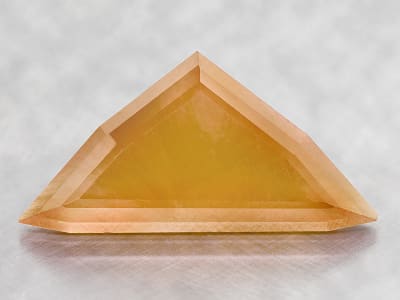Poldervaartite can be found in a light orange-pink to milky-white color. High-quality poldervaartite specimens are prized by collectors and facetable material is rare. The mineral was discovered at the Wessels Mine, Hotazel, Kalahari manganese fields, Northern Cape Province, South Africa in 1992. The only known locations to find Poldervaartite are the Wessels Mine and the N'Chwaning I and II mines in the Kalahari manganese field. It was named after Arie Poldervaart a petrologist at Columbia University that studied the rocks that make up the Kakamas area of northwest Cape Province where Poldervaartite is found. Olmiite and Poldervaartite are often confused with one another and can only be differentiated through electron microprobe analysis. Olmite is Manganese dominant and Poldervaartite is Calcium dominant calcium manganese silicate hydroxide. It has been proposed that most known Poldervaartite is actually Olmite.
General Information
LWUV: Weak red or pinkish white to pink
Poldervaartite Colors
-
 Colorless
Colorless -
 Pink
Pink -
 White
White
Countries of Origin
Unknown; South Africa
Care
Poldervaartite is very brittle so please take care when handling.
